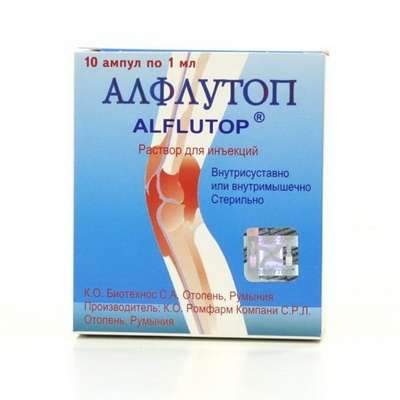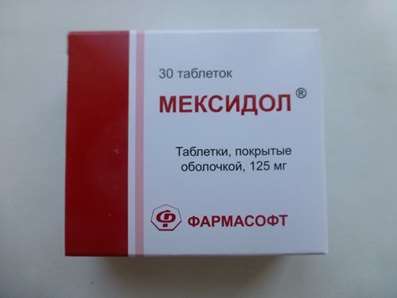Instruction for use: Klarisens
I want this, give me price
Dosage form: Tablets; syrup
Active substance: Loratadinum
ATX
R06AX13 Loratadine
Pharmacological groups:
H1-antihistamines
The nosological classification (ICD-10)
H10.1 Acute atopic conjunctivitis: Allergic conjunctivitis; Allergic eye diseases; Allergic conjunctivitis; Allergic conjunctivitis caused by chemical and physical factors; Allergic rhinoconjunctivitis; Allergic inflammation of the eyes; Spring Qatar; Spring keratitis; Spring conjunctivitis; Conjunctivitis allergic; Year-round allergic conjunctivitis; Exacerbation of pollinosis in the form of rhinoconjunctival syndrome; Acute allergic keratoconjunctivitis; Acute allergic conjunctivitis; Superficial bacterial infection of the eyes; Rhinoconjunctivitis; Seasonal allergic conjunctivitis; Seasonal conjunctivitis; SENSORY; Chronic allergic keratoconjunctivitis; Chronic allergic conjunctivitis
J30 Vasomotor and allergic rhinitis: Allergic rhinopathy; Allergic rhinosinusopathy; Allergic diseases of the upper respiratory tract; Allergic rhinitis; Allergic rhinitis seasonal; Vasomotor runny nose; Prolonged allergic rhinitis; All-year-round allergic rhinitis; All-year allergic rhinitis; Year-round or seasonal allergic rhinitis; All-the-year-round rhinitis of an allergic nature; Rhinitis vasomotor allergic; Exacerbation of pollinosis in the form of rhinoconjunctival syndrome; Acute allergic rhinitis; Edema of the nasal mucosa; Edema of the nasal mucosa; Edema of the mucous membrane of the nasal cavity; Swelling of the nasal mucosa; Swelling of the nasal mucosa; Pollinosis; Permanent allergic rhinitis; Rhinoconjunctivitis; Rhinosinusitis; Rhinosinusopathy; Seasonal allergic rhinitis; Seasonal allergic rhinitis; Hay rhinitis; Chronic allergic rhinitis; Allergic diseases of the respiratory tract
L20 Atopic dermatitis: Allergic diseases of the skin; Allergic skin disease noninfectious etiology; Allergic skin disease etiology nemikrobnoy; Allergic skin diseases; Allergic skin lesions; Allergic reactions on the skin; atopic dermatitis; Allergic dermatosis; Allergic diathesis; Allergic itching dermatosis; Allergic skin disease; Allergic skin irritation; allergic Dermatitis; atopic Dermatitis; allergic dermatoses; exudative diathesis; Itchy atopic eczema Itchy allergic dermatosis; Allergic skin disease; Cutaneous allergic reaction to drugs and chemicals; Cutaneous reactions to medications; Skin and allergic disease; Acute eczema; common neurodermatitis; Chronic atopic dermatitis; Exudative diathesis
L23 Allergic contact dermatitis: Allergic dermatitis;Purulent allergic dermatopathies; Contact allergic reaction; Contact allergic dermatitis; Contact allergic dermatitis; Photoallergic contact dermatitis
L50 Urticaria: Idiopathic chronic urticarial; Injury Urticaria; Chronic urticarial; Hives of the newborn
T78.3 Angioedema: Edema Quincke; Laryngeal exacerbation with angioneurotic edema; Recurrent angioedema; Allergic edema; Recurrent swelling of Quincy
T78.4 Unspecified Allergy: Allergic reactions to insulin; Allergic reactions to insect stings; Allergic reactions similar to systemic lupus erythematosus; Allergic diseases; Allergic diseases of mucous membranes; Allergic diseases and conditions resulting from increased release of histamine; Allergic diseases of mucous membranes; Allergic symptoms; Allergic symptoms in the mucous membranes; Allergic reactions; Allergic reactions caused by insect bites; Allergic reactions; Allergic conditions; Allergic laryngeal edema; allergopathy; allergic conditions; Allergy; House dust allergy; Anaphylaxis; Cutaneous reactions to medications; Skin reaction to insect stings; Cosmetic allergy; Drug allergy; Acute allergic reaction; Laryngeal edema allergic genesis and background radiation; Food and drug allergy
Composition and release form
5 ml of syrup contain loratadine 5 mg, in bottles of dark glass of 100 ml, in a cardboard bundle 1 bottle complete with a measuring spoon for 5 ml and 2.5 ml.
1 tablet - 10 mg; In contour acheikova packing 10 pcs.
Characteristic
Colorless or yellowish liquid with a fruity smell; Bubbles are allowed; Tablets white or almost white.
Pharmachologic effect
Mode of action - antiallergic, antihistamine, antipruritic, antiexudative.
The blocker of peripheral H1-histamine receptors of the second generation. Reduces the permeability of capillaries, has anti-edematous and moderate spasmolytic effect.
Pharmacodynamics
Does not have a sedative effect, does not cause addiction.
Pharmacokinetics
Quickly absorbed, binding to plasma proteins - up to 97%. Does not penetrate the BBB. Cmax is achieved in 8-12 hours. T1 / 2 is 3-20 hours, an average of 8.4 hours. With biotransformation, an active metabolite, dexarboethoxyloratadine, is formed. The drug and its metabolites are excreted in urine and with feces.
Clinical Pharmacology
The effect develops 30 minutes after admission and lasts up to 24 hours. In patients with chronic renal failure, pharmacokinetics do not change. With alcohol damage of the liver and in the elderly, Cmax and T1 / 2 increase.
Indications for Klarisens
Allergic rhinitis (seasonal and year-round) and conjunctivitis, acute urticaria, Quincke's edema, allergic reactions to insect bites, itchy dermatoses (contact allergic dermatitis, atopic dermatosis, chronic eczema), pseudoallergic reactions.
Contraindications
Hypersensitivity, phenylketonuria, pregnancy, breast-feeding.
Application in pregnancy and breastfeeding
Contraindicated. For the duration of treatment, breastfeeding should be stopped.
Side effects
In rare cases, there are possible - increased fatigue, headache, dizziness, dyspepsia, nausea, dry mouth, allergic reactions.
Interaction
Erythromycin, ketonazole, cimetidine increase the concentration of the drug in the blood. Klarisens lowers the level of erythromycin in the blood by 15%.
Dosing and Administration
Inside, before eating. Adults and children (over 12 years old or with a body weight of more than 30 kg) - 10 mg (1 tablet or 2 measuring spoons of 5 ml syrup) once a day. Children aged 2 to 12 years - 5 mg (1/2 tablet or 1 measuring spoon of 5 ml syrup) once a day.
Overdose
Symptoms: drowsiness, headache, tachycardia.
Treatment: symptomatic.
Precautionary measures
Use with caution in patients with impaired hepatic function: a day is recommended (once every 2 days).
Storage conditions of the drug Klarisens
In a dry place, at a temperature of no higher than 25 ° C.
Keep out of the reach of children.
Shelf life of the drug Klarisens
2 years.
Do not use after the expiry date printed on the package.

 Cart
Cart





